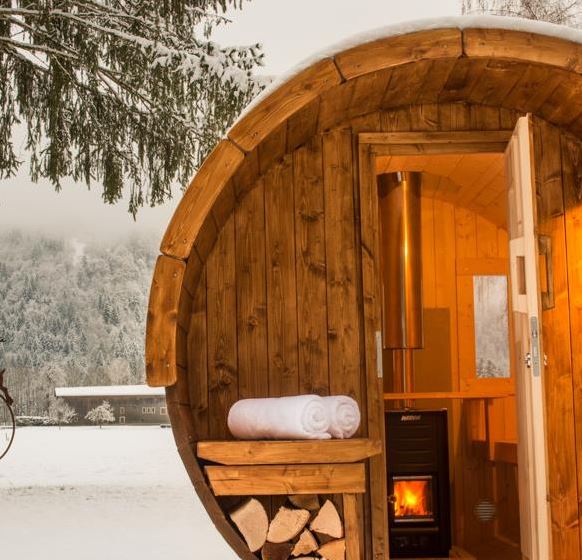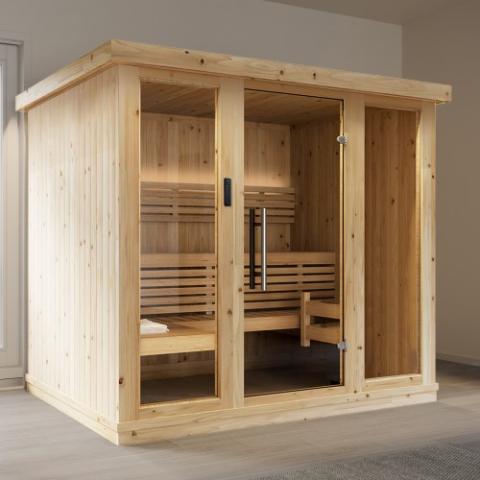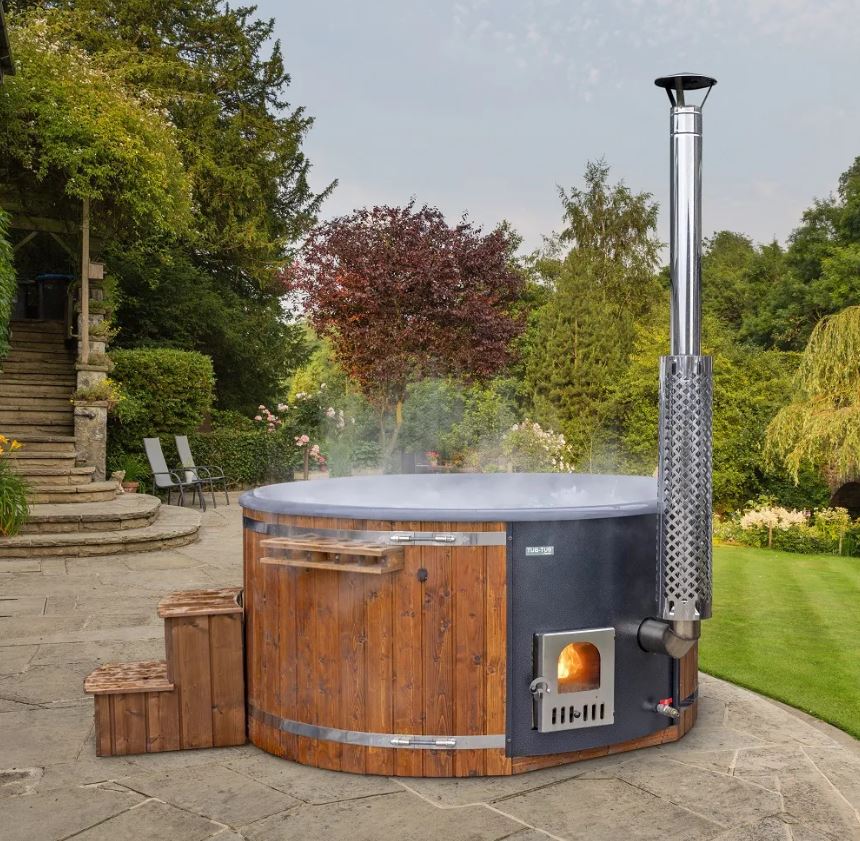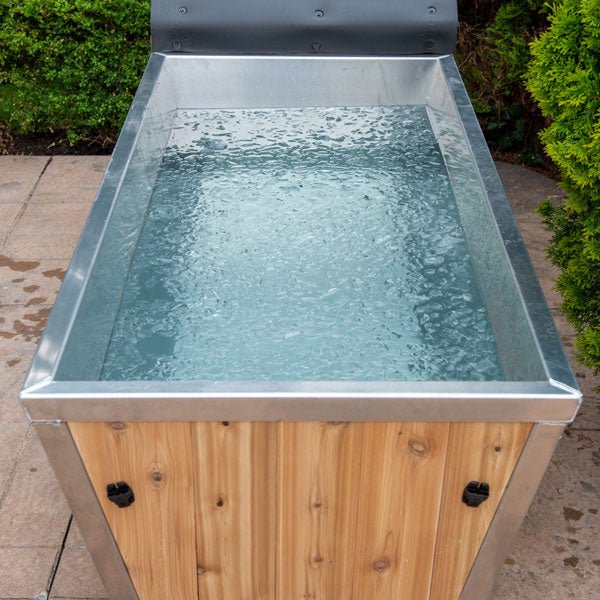
2025's State-by-State Stress Levels Revealed: Where Are Americans Most Relaxed?
2025-01-06 06:20:10 -0500
Is a Sauna Good for a cold? Can Sitting in a Sauna Help Common Cold symptoms?
2024-12-18 09:42:26 -0500
2024's State-by-State Stress Levels Revealed: Where Are Americans Most Relaxed?
2024-11-07 05:54:46 -0500
Top 11 Fitness Clubs in 2025: Best Gyms with Pools, Saunas, Steam Rooms, and Hot Tubs Near You Offering Spa Amenities
2024-10-17 04:43:07 -0400
Does Planet Fitness Have a Steam Room, Sauna or Hot Tub?
2024-10-17 04:42:53 -0400
Are you considering adding a home sauna to your living space? You're not alone! The popularity of home saunas has been steadily increasing as more people recognize their numerous benefits.
Owning an at-home sauna can greatly enhance your overall well-being, from relaxation and stress relief to improved blood circulation and detoxification. This guide covers the essential factors to consider when buying a sauna for home. Understanding key considerations is crucial whether you need it for relaxation or health benefits. Find your perfect retreat by exploring these important aspects on where to put a sauna in your house before making a purchase.
Are you considering adding a home sauna to your living space? You're not alone! The popularity of home saunas has been steadily increasing as more people recognize their numerous benefits. Owning an at-home sauna can greatly enhance your overall well-being, from relaxation and stress relief to improved blood circulation and detoxification. This guide covers the essential factors to consider when buying a sauna for home. Understanding key considerations is crucial whether you need it for relaxation or health benefits. Find your perfect retreat by exploring these important aspects on where to put a sauna in your house before making a purchase.
Before buying a home sauna, decide between indoor or outdoor options. Consider space, ventilation, privacy, and convenience when choosing your sauna. Each aspect has pros and cons, so decide wisely based on your specific needs and preferences.
Indoor saunas offer the convenience of being installed in your home's comfort. You can transform a spare room, a cozy basement, or a private bathroom into your house. Consider these essential points:
Outdoor saunas are freestanding structures that can be heated via electric sauna heaters or using a wood burning sauna stove. These are most commonly located in private gardens for a secluded sauna experience.. Here are some factors to consider when contemplating an outdoor sauna:
The choice between indoor saunas or outdoor saunas depends on your preferences, available space, and desired ambiance. Carefully consider these factors to make the right choice for your home sauna experience.
Renowned author and speaker Tony Robbins recommends combining an outdoor plunge pool with an indoor sauna. This pairing creates a stimulating contrast of hot and cold therapies, offering added health benefits and a distinctive experience.
When considering the purchase of a home sauna, it's important to understand the differences between traditional steam saunas and infrared saunas. These two types of saunas utilize distinct heating mechanisms and offer unique benefits. By exploring their characteristics, you can determine which option best fits your preferences and requirements.
Traditional steam saunas have been around for centuries and are known for their steamy and intense sauna experience. Here are some key features of traditional steam saunas
Heating Mechanism: Traditional steam saunas use a heater or stove to warm up rocks or stones. Water is then poured over these heated rocks, producing steam that raises the temperature inside the sauna.
Heat Distribution: The heat in a traditional sauna is evenly distributed throughout the space, resulting in high temperatures and humidity. This creates a more intense and steam-filled environment, which some individuals find invigorating.
Health Benefits: Traditional steam saunas are believed to offer a range of health benefits. Combining heat and humidity can promote sweating, which helps cleanse the body and eliminate toxins. Steam saunas are known for their relaxation properties, potential pain relief, and muscle relaxation after exercise.
Higher Temperatures: Traditional steam saunas reach 150-195°F (65-90°C), offering an intense, sweat-inducing experience. Higher temperatures benefit those seeking a more vigorous sauna session.
Infrared saunas, on the other hand, utilize a different heating mechanism that provides a unique sauna experience. Here are the distinguishing features of infrared saunas:
Heating Mechanism: Infrared saunas use infrared panels to emit radiant heat. These panels generate infrared wavelengths that directly heat the body without significantly heating the surrounding air.
Heat Distribution: Unlike traditional steam saunas, infrared saunas primarily heat the objects and bodies within the sauna rather than the air. This results in a more focused and gentle heat with lower air temperature.
Health Benefits: Infrared saunas offer similar health benefits to traditional steam saunas but with some variations. The focused infrared heat is believed to penetrate the body's tissues, promoting relaxation, muscle recovery, improved circulation, and potential pain relief. They are often preferred by those sensitive to high temperatures in traditional steam saunas.
Lower Temperatures: Infrared saunas maintain temperatures of 120-150°F (50-65°C), making them more comfortable and accessible for all users. These lower temperatures enhance the sauna experience while still providing therapeutic benefits.
When choosing between traditional steam saunas and infrared saunas, consider the following factors:
Preferred Sauna Experience: Consider whether you enjoy a traditional sauna's steamy, high-temperature environment or prefer an infrared sauna's gentle, focused heat. Your personal preference and comfort should guide your decision.
Health Benefits: Consider your specific needs and goals when assessing the health benefits of saunas. Both types have advantages, but the method of heat delivery and sauna environment can influence your experience of those benefits.
Energy Efficiency: Choose an infrared sauna for energy efficiency. It heats up quickly, uses less power to maintain temperature, and is more energy-efficient compared to traditional steam saunas.
When buying a home sauna, consider the budgetary aspects. Knowing the costs of indoor and outdoor saunas will help you make an informed decision that fits your financial capabilities. Let's explore the key cost considerations for buying a home sauna.
The decision between indoor and outdoor saunas affects the overall cost. Here's a breakdown of cost considerations for each option:
Installation: Indoor saunas may require additional construction work, such as creating a dedicated space, electrical wiring, and ventilation systems. These installation costs can vary based on the complexity of the project and your existing home infrastructure.
Materials: The materials used for indoor saunas, such as wood, insulation, and sauna accessories, contribute to the overall cost. The type of wood chosen for the sauna construction can also impact the price.
Ongoing Maintenance: Indoor saunas may require occasional maintenance, such as cleaning, resealing, and potential repairs. Consider these costs when budgeting for your sauna.
Installation: Outdoor saunas generally require a sturdy foundation and proper site preparation. Depending on the design and complexity, you may need to hire professionals for installation, which can incur additional costs.
Materials: Outdoor saunas often require durable and weather-resistant materials. Factors such as size, construction quality, insulation, and additional features (like changing rooms or showers) will influence the material costs.
Ongoing Maintenance: Outdoor saunas may require regular maintenance to protect them from the weather elements. This can include sealing, weatherproofing, and occasional repairs.
Another cost consideration is building your sauna at home or purchasing a pre-built unit. Here's an overview of the cost comparison between the two options:
Building your own home sauna allows for greater customization and potential cost savings. However, building a sauna yourself requires expertise, time, and effort. Consider costs for materials, tools, permits (if needed), and professional assistance. Forbes has an article comparing the costs of building versus buying a sauna, offering helpful guidance.
Purchasing a pre-built sauna generally offers convenience and a streamlined installation process. The cost of buying a sauna will depend on factors such as the size, materials, brand, and additional features. These can vary from anything as low as $1500 for an infrared sauna to $20,000 for a top of the range outdoor barrel sauna. Always consider the delivery fees, warranties, and after-sales support when comparing sauna options.
Choosing the right location for your indoor sauna is crucial to ensure optimal functionality, convenience, and integration within your home. Let's explore various suitable locations for indoor saunas and the key considerations associated with each:
A bedroom sauna offers convenient and private access, perfect for relaxation. Enjoy sauna sessions anytime, with proximity at your disposal. Unwind in complete privacy, free from sharing space. Before committing, consider the following crucial factors for the ideal setup.
Space Availability: Ensure sufficient space in your bedroom to accommodate the sauna. Consider the sauna's size and any additional clearance requirements for safe installation.
Ventilation: Proper ventilation is essential to maintain air quality and prevent excessive humidity. Ensure your bedroom has adequate ventilation systems or the ability to install them.
Electrical Requirements: Typically, most infrared saunas can be conveniently plugged into a standard wall socket. However, traditional saunas, which have a higher power output, necessitate dedicated electrical circuits. Confirm that your bedroom can support the electrical load of the sauna without overloading the existing electrical system.
Flooring Considerations: Saunas produce heat and moisture, so choosing flooring materials that can withstand these conditions is important. Heat-resistant and non-slip flooring options such as tile, vinyl, or concrete are suitable for sauna areas.
Installing a sauna in your bathroom can offer convenience and easy access to showering facilities. Consider the following when selecting this location.
Basements often provide ample space for an indoor sauna at home. Consider the following when considering a sauna in basement:
Garages have the potential to serve as suitable spaces for various sauna types, although the most commonly utilized indoors is the infrared sauna. This option becomes viable when there is abundant unused garage space available. Here are some considerations for using the garage as a sauna location:
When selecting the location for your indoor sauna, consider the impact on the overall home design and functionality. Assess the dedicated space required for the sauna, including entry and exit points, and how it integrates with the surrounding area. It's important to strike a balance between your sauna goals and the harmony of your living space.
Seek guidance from professionals like architects, contractors, and electricians before finalizing the sauna location. They can ensure compliance with building codes, assess feasibility, and provide advice on ventilation, electrical needs, and flooring choices.
Owning a sauna can bring many health and wellness benefits that contribute to a better quality of life. The benefits include:
Saunas are renowned for promoting relaxation and reducing stress. The heat relaxes muscles, relieves tension, and reduces anxiety. Stepping into a sauna creates a calming atmosphere, helping you unwind and rejuvenate after a long day.
Sauna heat dilates blood vessels, improving circulation. This boosts oxygen and nutrient delivery to muscles and organs, enhancing cardiovascular health. Better circulation aids in removing metabolic waste and toxins from the body, benefiting overall well-being.
Saunas induce sweating, facilitating the body's natural detoxification process. The elevated body temperature triggers perspiration, eliminating toxins, heavy metals, and pollutants. This detoxification process enhances well-being and promotes overall health.
Regular sauna sessions can have a positive impact on sleep quality. The deep relaxation experienced in a sauna can help reduce insomnia and promote more restful sleep. By releasing tension and promoting a sense of calm, saunas create an optimal environment for a good night's sleep.
Saunas provide a social space for quality time with loved ones. Sharing sauna sessions promotes bonding, communication, and relaxation, creating memorable experiences and strengthening social connections. Sizes range from 2 person - 6 person sauna so whether it's a couples retreat or a time for you and your friends to reconnect, you'll be able to find something that matches your needs.
When buying a home sauna, consider the key factors discussed. Evaluate your needs, preferences, and budget for a satisfying experience. A sauna is an investment in well-being, offering a sanctuary to relax and rejuvenate. Choose the right sauna for a rewarding and enjoyable experience. Happy sauna hunting!

I'm Jasper Knight, the founder of SecretSaunas.com. During my travels through Finland and Scandinavia in 2018 I was introduced to the thrilling local ritual of taking daily hot saunas and then cooling off by plunging into the dark icy waters of a frozen lake. This experience was so fulfilling that it felt like an addiction. My desire to return to the forests and lakes of Northern Europe led me to set up Secret Saunas with the mission of bringing that authentic Finnish sauna experiences home.





